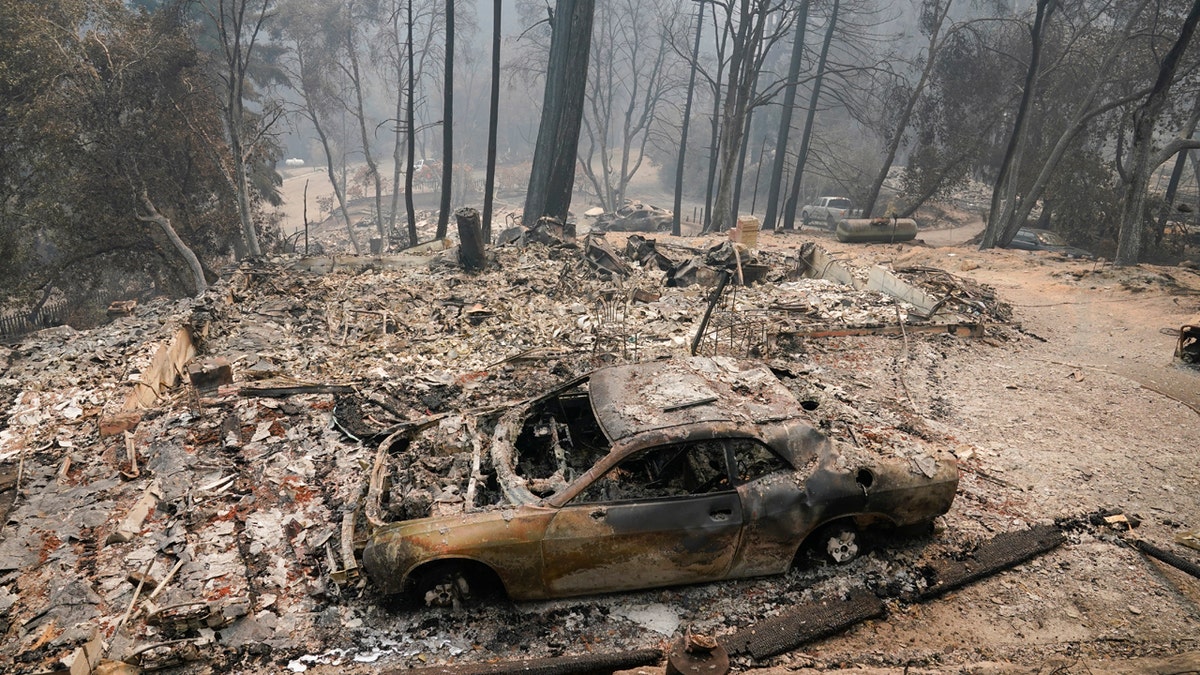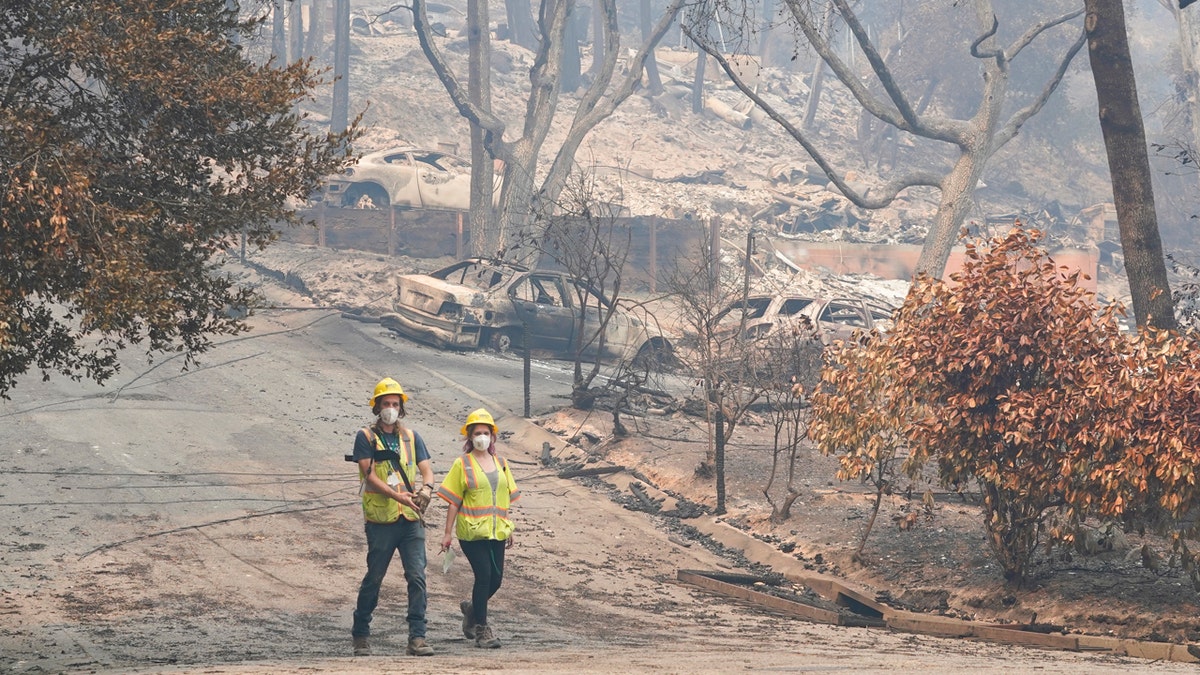Residents assess damage as hundreds of wildfires continue to burn in California
Crews make progress in deadly California wildfire fight; Claudia Cowan reports from Solano County.
Firefighters in California made progress against three major wildfires as they look to take advantage of cooler weather on Wednesday with the help of additional fire crews working to carve out containment lines.
The fires have burned nearly 2,000 square miles -- an area roughly the size of Delaware -- since Aug. 15, killing at least seven people as four remain missing.
"This is going to be a longtime firefight and long time with smoke in the air and firefighters staffing the line," Cal Fire Division Chief Ben Nicholls said at a late-afternoon briefing on Tuesday. "Conditions are in our favor and we're going to maximize them while we've got them."
VAST SMOKY PALL FROM CALIFORNIA WILDFIRES SPOTTED BY NASA SATELLITE
Three major blazes burning around the San Francisco Bay Area -- two of which are the second and third largest in state history -- saw some containment throughout the day. One was 27% surrounded as of Wednesday morning.

Firefighter Cody Nordstrom, of the North Central Fire station out of Kerman, Calif., monitors hot spots while fighting the CZU Lightning Complex Fire in Bonny Doon, Calif. (AP Photo/Marcio Jose Sanchez)
“Every percent of containment is hours and hours of sweat and blood up on those lines,” Cal Fire Deputy Chief Jonathan Cox said Tuesday evening.
Over 14,000 firefighters from half a dozen states are now battling some 24 major blazes that were sparked by dry lightning during a record heat wave.

A fire-ravaged neighborhood is seen Tuesday, Aug. 25, 2020, in Boulder Creek, Calif., after the the CZU August Lightning Complex Fire passed by. (AP Photo/Marcio Jose Sanchez)
Around 136,000 people remain under evacuation orders, but some residents in Napa, Sonoma, and Solano counties were able to return home on Tuesday.
"I'll just say that was one part of my life and I'll start a new life," Marcia Ritz, 77, told KTVU about her Napa County mobile home that was reduced to rubble.
CALIFORNIA WILDFIRE DESTROYS ENDANGERED CONDOR SANCTUARY
"I feel sorry for so many people here," Ritz added, noting that many of her neighbors in the mobile home park were on fixed incomes or uninsured.
The massive fires — coming much earlier in the season than expected — have pushed firefighters to the breaking point as they also deal with complications from the coronavirus pandemic and a lack of inmate crews.
David Serna, 49, a firefighter with the Presidio of Monterey Fire Department, was battling a fire in that county last week when his rented home in Santa Cruz County burned to the ground.
“I wanted to get up to the house and see what was left. Got up there and nothing. It was all gone,” Serna told KTVU on Tuesday.
He and his wife did find a metal heart-shaped decoration from their wedding day.
“All the years that I fought fires and seeing this type of destruction in other places,” Serna said. “But when it hits that close to home, it becomes almost unbelievable.”
With limited crews to tackle fires on the ground, California has been relying more on bulldozers, aircraft and firefighters from other states and the federal government, Daniel Berlant, Cal Fire chief of wildfire planning and engineering, told the Associated Press.
CLICK HERE FOR MORE WEATHER COVERAGE FROM FOX NEWS
About 300 National Guard troops were finishing firefighter training and were expected to be on the lines Wednesday as another 300 begin four days of training, said spokesman Lt. Col. Jonathan Shiroma.

A fire-ravaged neighborhood is seen Tuesday, Aug. 25, 2020, in Boulder Creek, Calif., after the the CZU August Lightning Complex Fire passed by. (AP Photo/Marcio Jose Sanchez)
California has scrambled in recent years to field enough prison fire crews as their numbers dwindled while the state released lower-level inmates.

Workers with Davey Resource Group asess the damage to the trees in a neighborhood Tuesday, Aug. 25, 2020, in Boulder Creek, Calif.,after the the CZU August Lightning Complex Fire passed by. (AP Photo/Marcio Jose Sanchez)
Thousands more were released early as the state responded to the coronavirus pandemic.
CLICK HERE FOR THE FOX NEWS APP
Fire season typically peaks in the fall, when searing weather and dry, gusty winds have historically triggered some of the state's largest and deadliest fires.
The Associated Press contributed to this report.























